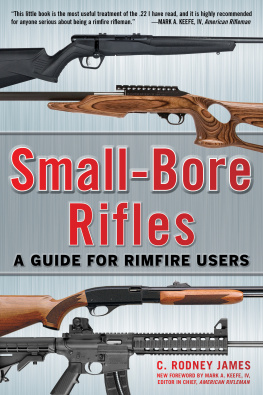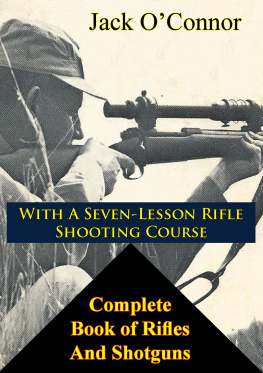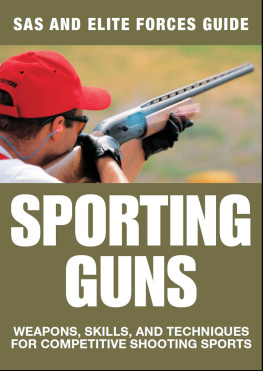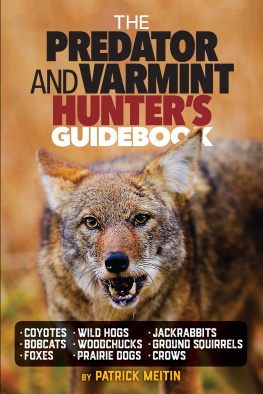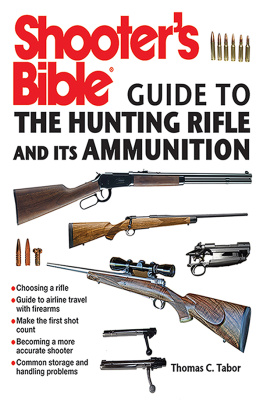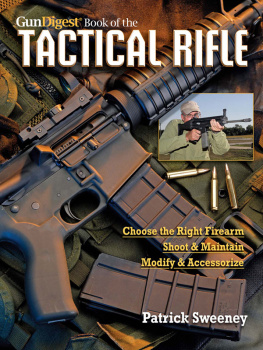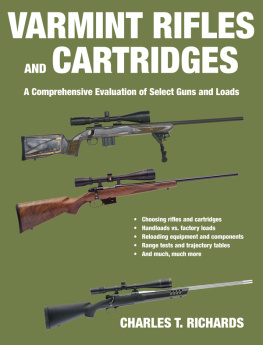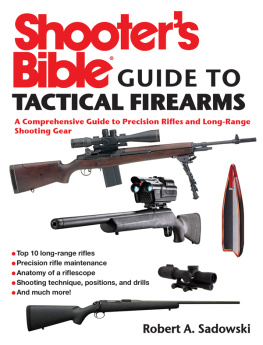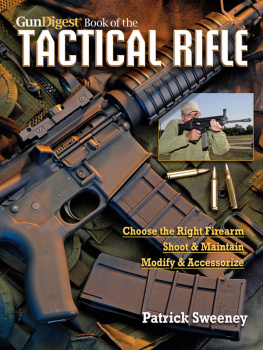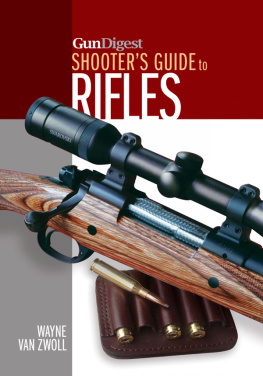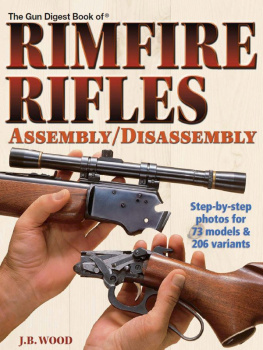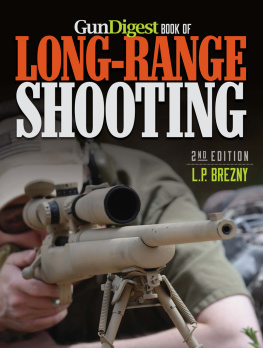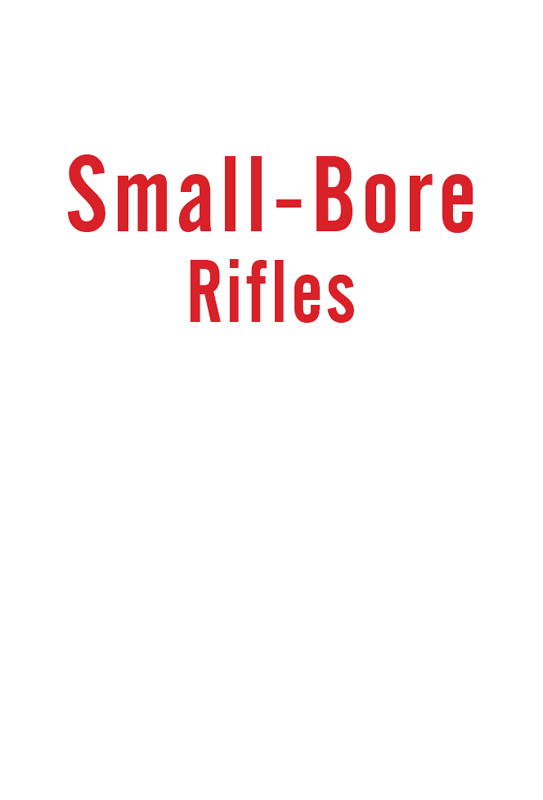Copyright 2018 by C. Rodney James
All rights reserved. No part of this book may be reproduced in any manner without the express written consent of the publisher, except in the case of brief excerpts in critical reviews or articles. All inquiries should be addressed to Skyhorse Publishing, 307 West 36th Street, 11th Floor, New York, NY 10018.
Skyhorse Publishing books may be purchased in bulk at special discounts for sales promotion, corporate gifts, fund-raising, or educational purposes. Special editions can also be created to specifications. For details, contact the Special Sales Department, Skyhorse Publishing, 307 West 36th Street, 11th Floor, New York, NY 10018 or .
Skyhorse and Skyhorse Publishing are registered trademarks of Skyhorse Publishing, Inc., a Delaware corporation.
Visit our website at www.skyhorsepublishing.com.
10 9 8 7 6 5 4 3 2 1
Library of Congress Cataloging-in-Publication Data is available on file.
Cover design by Tom Lau
Cover photos courtesy of Magnum Research, Remington, Savage, and Smith & Wesson
Print ISBN: 978-1-5107-1840-1
Ebook ISBN: 978-1-5107-1841-8
Printed in China.
CONTENTS
Charles Singer Landis
18871961
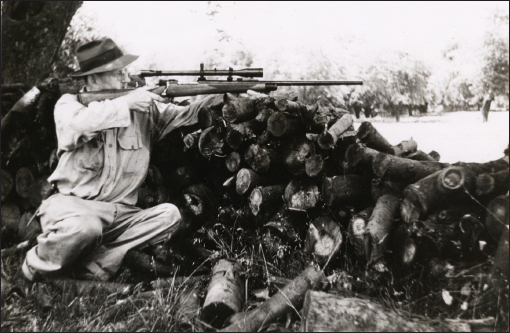
C. S. Landis: A late photo by Bob Bell.
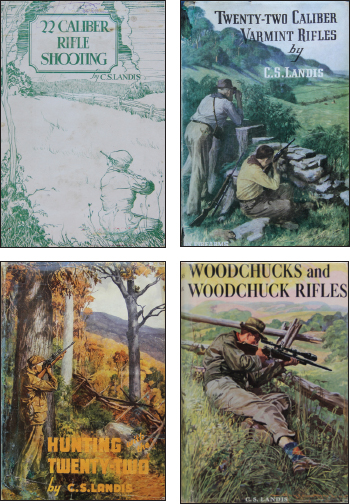
Charles Singer Landis was the preeminent small-bore writer and target/varmint shooter of his time. He was the author of 22 Caliber Rifle Shooting (1932), Twenty-Two Caliber Varmint Rifles (1947), Hunting with the Twenty-Two (1950), and Woodchucks and Woodchuck Rifles (1951).
Born in Pennsylvania, Landis grew up shooting and hunting from an early age. He was employed in various capacities, including assistant advertising manager at the Hercules Powder Company. He wrote publications for that company, plus did countless articles for the shooting press, including The American Rifleman, The Gun Digest, The Rifleman, The Field Illustrated (London), Forest & Stream, The Sporting Goods Dealer, Sportsmans Digest, and Rod & Gun in Canada , where he served as shooting editor for forty years.
Unlike so many writers in this field, Landis was not a self-promoter. While details of his hunting trips and travels are recorded, little information can be found regarding his early life, education, or professional career. When he died, obituaries were brief and few. Fortunately, since publication of an earlier version of this book ( The Gun Digest Book of the .22 Rifle), Landiss writings are finally being brought back into print and are now available in paperback at reasonable prices.
Landis was, above all, an experimenter with a keen interest in the how and why of firearms and ammunition performance. He was a perceptive observer of wildlife, which made him an expert hunter. Best of all, he was a good writer, with the ability to organize his vast store of knowledge and information and present it in a style both concise and eminently readable.
DEDICATION
To friend Wanda Rucker, who piloted this manuscript through my computer and without whose assistance this project would not have happened.
In memory of my dear friend and mentor James O. E. "Jim" Norell, whom I lost this year. His suggestions and criticisms are found throughout the text and made it better.
ACKNOWLEDGMENTS
S ince no book is really written alone, I wish to thank those who provided information, aid, and comfort in the completion of this project.
B. J. Alicie, Shane Barnhart, Bob Bell, Philip Blower, Tim Brant, Tim Butler, Bob Collins, Mark Delcotto, O. M. Dodgen, Jonathan Doege, Bart Eaton, Martin Fackler M.D., Paul Gideon, John Gyd, Scott Grange, Ken Green, Wilber Harris. Allan Jones, Chuck Jones, Carl Jooss, Mike Jordan, Macky Locklin, Bruce Meredith, Roy Marcot, Mary McGavick, Steven K. Moore, Jason Nash, Paul Nordquist, Jim Norrell, Brett Olin, Anusha Pakkam, Amy Plasse, Harry Pasko, Kayley Pasko, Rebecca Picone, Carl Polley, Kenneth Potter, Carlos Romero, Tom Schiffer, Jackie Stenton, Tony Tello, Frank Turner, Bruce Young, Richard Wahl, Ken Warner, Roger Weir, Cathy Winstead. And a special thanks to Collectors Firearms for use of their archives for photos of hard-to-find rifles.
FOREWORD
TO THE SECOND EDITION
I t happens daily. Still. I get calls and e-mails asking where all the .22 ammo is. There is no secret government contract. There is no conspiracy. Its simply supply and demand. The major domestic ammunition makers have been producing more ammunition than ever. They are all up in terms of total productiondouble, and in some areas, triple-digit increases. They are all running three shifts. Efficiency is up. Maximum production is coming out of all them. And it is not enough. Demand for the humble .22 Long Rifle still exceeds production capacityand probably always will.
The problem with rimfire production is that adding capacity is incredibly expensive and not easy. The machines are very spendy and cannot just be ordered out of a catalog. And then you have to train the workforce, too, after the tooling is in and the plant built. And there are aspects of rimfire production that simply cannot be rushed nor should they, ever. The priming of the rimfire case borders on alchemy, dangerous alchemy. And priming compound is something one cannot take any safety shortcuts with, period!
That said, more .22 Long Rifle was produced last year than in any other year in the history of mankind. And it was still not enough. I have visited the four major ammunition plants in the United States that produce .22 rimfirethey are in Arkansas, Idaho, Minnesota, and Mississippias well as a couple of plants overseas. There are literally millions upon millions of rounds produced every day around the world of .22 Long Rifle. That adds up to billions a year.
It is an archaic process to make .22 Long Rifle, even when done on fairly modern machines. Take a modern .22 Long Rifle and Monsieur Louis-Nicolas Flobert would know what to do with it. The rimfire cartridges basic design hasnt changed that much, but it has become ubiquitous, especially in its .22 Long Rifle form. There have been improvements in propellant and projectiles, but that basic case design remains. Its a cartridge everyone shoots, yet few understand. The book in your hands will help you understand.
Forensic examiner and long-time gunwriter C. Rodney James has had a lifelong passion for the .22 riflean analytical enthusiasm that he passes on in this book. Rodney covers virtually every aspect of the .22 and other rimfire cartridges. The opening chapter on the evolution of the small-bore rimfire cartridge is a blend of solid historical research and a deep understanding of cartridge design and ballistics. His observations on accuracy are of particular interest, and the author delivers a detailed analysis on why some .22 ammunition shoots better than others. But this book is not just on ammunition; the various autoloading, pump-action, single-shot, bolt-action, and lever-actions currently available are described, as is an extremely useful survey of major models that are long since out of production. Of particular note is Rodneys approach to evaluating the condition of used .22-cal. rifles.
Rodney has spent a considerable amount of time behind .22 Long Rifles and his information concerning wind drift, exterior ballistics, and terminal performance is based on solid experience and his scientific approach to recording a lifetime of results. His observations of varmint hunting with the .22 as well as the NRA small-bore shooting sports are informative and cover the range of .22 activities that require precision.

